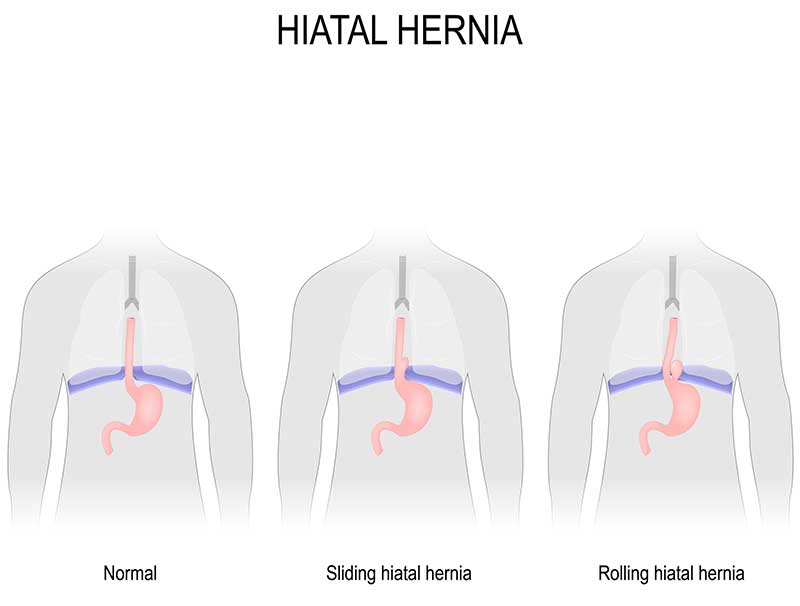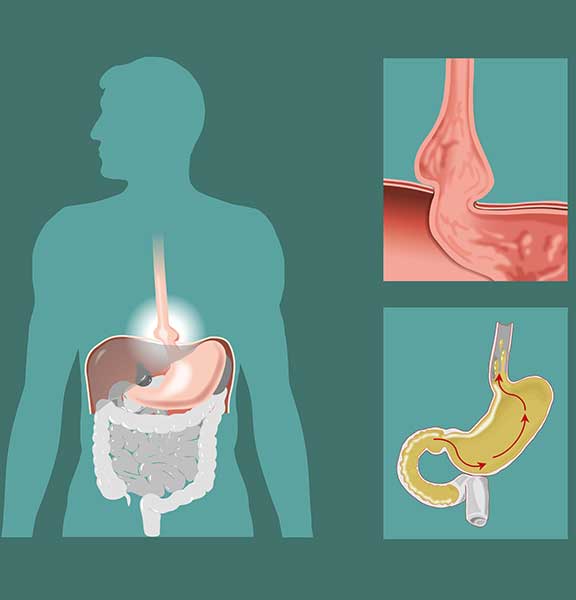

A paraesophageal hernia is a type of hiatal hernia.
The hiatus is the opening in the diaphragm that allows the esophagus to pass through and connect to the stomach. Additionally, a hernia is any occurrence of an internal body structure protruding through neighboring muscle or tissue.
Paraesophageal hernias are simply hiatal hernias that are located next to the esophagus.
What is Laparoscopic Repair?
In general, a laparoscopic procedure is a minimally invasive surgery that is performed through smaller incision sites than those utilized in traditional surgery. These procedures often necessitate that multiple incisions are made but they are all very small. The surgeon is able to operate through these smaller openings because they use a small camera on a tube, called a laparoscope, to see the surgical site. This is advantageous because it lowers the risk of infection and shortens the recovery period in most cases. It also leaves less scarring and requires less hospital time and wound care. This technique is currently considered the safest option for paraesophageal hernia repair when surgery is required.


Who is a Candidate?
Not all paraesophageal hernias cause symptoms. In these cases, the hernia may be unnoticed and untreated. In other cases, patients may experience mild symptoms. These include acid reflux, heartburn, chest pain, nausea, shortness of breath, or GERD. Some patients may be able to discuss these symptoms with their physician and relieve them through over-the-counter medications and lifestyle changes.
However, some patients may require surgery in order to get relief from their symptoms. Additionally, if the physician determines that the patient is at risk for their hernia becoming strangulated, then they will recommend surgery. Strangulation means that the hernia could potentially cut off circulation to the surrounding tissue, which can be serious or even deadly. The patient should also report any bleeding or narrowing of the esophagus, because this could indicate an esophageal stricture that needs to be treated with surgery as well. The physician should also consider the patient’s overall medical history, medications, and risk level prior to recommending this procedure. It is particularly important to eliminate other possible causes of bleeding or chest pain before the procedure.
What to Expect
The physician will provide detailed instructions to the patient about how they can prepare for surgery. For this particular procedure, common instructions include an exercise regimen, smoking cessation, and temporarily ceasing certain medications. The day of surgery, the patient will be put under general anesthesia. The physician will then make several, usually three to five, small incisions. These will be used for entry of the laparoscope and the surgical instruments. The physician will pull the stomach back down through the hiatus and secure it to the lower portion of the esophagus. This will help to prevent the hernia from protruding through the hiatus, as well as reduce the amount of reflux experienced. In some cases, the surgeon may also place a mesh around the esophagus at the hiatus.

